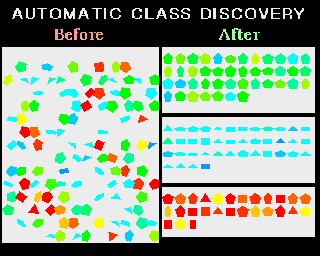5. Practical Uses for Bayesian Networks
5.1 AutoClass
The National Aeronautic and Space Administration has a large investment in Bayesian research. NASA's Ames Research Center is interested in deep-space exploration and knowledge acquisition. In gathering data from deep-space observatories and planetary probes, an apriori imposition of structure or pattern expectations is inappropriate. Researchers do not always know what to expect or even have hypotheses for which to test when gathering such data. Bayesian inference is useful because it allows the inference system to construct its own potential systems of meaning upon the data. Once any implicit network is discovered within the data, the juxtaposition of this network against other data sets allows for quick and efficient testing of new theories and hypotheses.
The AutoClass project is an attempt to create Bayesian applications that can automatically interpolate raw data from interplanetary probes, and deep space explorations.[15] A graphical example of AutoClass's capabilities is displayed in Figure 3. Incidentally, the source code for AutoClass is available in both LISP and C on an Open Source basis.

Figure 3: An AutoClass interpolation of raw data with no predefined categories. Sorted data is grouped by colour and shape. The top area is sorted into green-blue shapes, the middle into blues, and the bottom into red-orange-yellow shapes.
An applied example of AutoClass's capabilities was the input of infrared spectra. Although no differences among this spectra were initially suspected, AutoClass successfully distinguished two subgroups of stars.[16]





